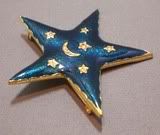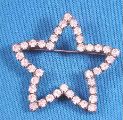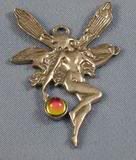 For example, we save the wishbone after the Thanksgiving turkey. We believe that if we break it and get the larger side, our wish will come true. Wishbone jewelry and has been around for years. Rhinestone wishbones were particularly popular during the 1950's and 60's. I guess humans just can't stop wearing bones! Of course, these examples are much more pleasing than a real wishbone would be. These scatter pins also have the added element of amethyst, which is supposed to offer protection.
For example, we save the wishbone after the Thanksgiving turkey. We believe that if we break it and get the larger side, our wish will come true. Wishbone jewelry and has been around for years. Rhinestone wishbones were particularly popular during the 1950's and 60's. I guess humans just can't stop wearing bones! Of course, these examples are much more pleasing than a real wishbone would be. These scatter pins also have the added element of amethyst, which is supposed to offer protection.We can't forget magical themes either. Magicians, sorcerers, fairies and other magical beings can be both good and evil. Children in particular believe in these magical beings, perhaps because they feel a lack of power over their lives. Many children's books (Harry Potter anyone?) have magic as an important part of the story line. A lot of little girls love fairies and especially adore Tinkerbell. This darling little fairy looks a bit like Tinkerbell and is something that can be worn as a pendant or hung in a window. Personally, I think she looks like she is playing basketball. I wonder if she's a relation to Magic Johnson?
I think the most common magical piece is the star. We are taught as very young children that we can make wishes on the first star of the evening. One of the first songs we ever learn is Twinkle, Twinkle, Little Star. Stars have always had an important place throughout the history of the human race. We put them on Christmas trees, we award them as honors, we accord celebrities the title of "star" just to name a few. So it's no wonder that they are one of the most common themes in jewelry. Here's just a couple of examples, but I bet you have at least four or five in your own jewelry box.

 Did you happen to notice the happy face on the blue star? Another modern day example of magical thinking, wishing random strangers happiness.
Did you happen to notice the happy face on the blue star? Another modern day example of magical thinking, wishing random strangers happiness.I've just touched on a few items of jewelry that reflect magical thinking. At a subconscious level I think that we often tend to migrate toward old themes that promise us luck, power and happiness.

No comments:
Post a Comment